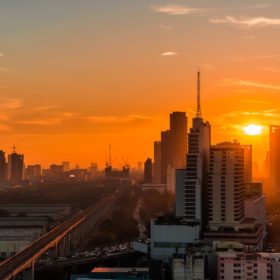Distributed generation the main driver for solar in Japan and the Philippines
Two reports have concluded rooftop solar may replace PV parks as the main growth driver in the two big Asian markets over the next decade. Support programs for utility scale PV in both countries no longer seem attractive enough.
PV+storage opportunity looms in Asia-Pacific region: WoodMac
Solar-plus-storage could be competitive against gas peaking power plants in Australia within the next five years, as the average solar-plus-storage LCOE across the Asia-Pacific region is set to fall from $133/MWh this year to $101/MWh by 2023, according to a newly released research report.
New billing method and PV+storage for allday energy supply on Philippine island
No more than four hours per day, did the 160 households enjoy energy supply. This has had negative impacts on the economic development of the islands. With support from the ADB, the island inhabitants now have 24h supply of clean energy, and new billing methods that suit the economic realities of poorer households.
Philippines lowers FIT levy
The country’s energy regulator has decided to reduce the levy that finances the FIT program for renewable energy from P 0.2563/kWh to P 0.2226 ($0.004)/kWh. The lower levy is expected to go into effect next month.
IFC anchors green bond for 5 GW of renewables in east Asia and Pacific
World Bank sister organization the IFC has made a $75 million commitment to a green bond recently issued by Philippines based developer AC Energy. Vietnam’s sub-standard financial sector performance has prompted the Asian Development Bank to suggest green bonds could best leverage the country’s renewable energy targets.
ADB invests $155 million in Thai green bonds
The bank continues its involvement in Thailands largest IPP B.Grimm, which is set to grow its renewable energy portfolio. According to ADB, the green bond proceeds will go to nine operational solar PV plants with a cumulative rating of 67.7 MW, and 30.8 MW that are currently still under construction.
Philippine regulator opposes net metering expansion
The Philippines’ Energy Regulatory Commission (ERC) has said the removal of the 100 kW cap for solar installations under net metering would be difficult for the nation’s grid to accomodate. Meanwhile, a proposal to raise the threshhold is being discussed in the country’s Senate.
IRENA and southeast Asian nations pledge action on PV
The International Renewable Energy Agency wants to unlock the PV potential of the Asia-Pacific region with technical and planning support. It says a better flow of knowledge is needed to close the gap on a regional aim of generating 23% of energy from renewables by 2025.
Asian market to see 355 GW of solar over five years, despite policy challenges
Despite political hurdles in key markets including China, India and Japan, Asia remains highly active. This year, 59 GW of solar is expected to be installed and due to further system price declines, a phase-out of subsidy schemes can be offset.
Industry groups lash out at proposal to back minigrids in the Philippines
Heated opposition to a legislative bill in the Philippines has sparked debate over subsidies for renewables and the potential for battery-backed PV systems to expand rural electricity access.










